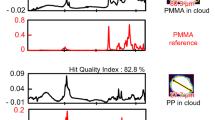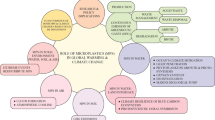Abstract
Conventional power plants are prolific sources of cloudnucleating particles. Consequently clouds forming in air influenced by such emissions contain higher concentrations of cloud droplets than would prevail in clean conditions; optical properties of clouds are thereby modified, causing them to reflect more sunlight and transmit less. That has obvious consequences for climate physics, but it may also be relevant for mesoscale processes since quite substantial energy changes are involved. Ships constitute isolated sources in an environment that is often quite clean, and when low thin cloud layers are present, ships delineate their courses in satellite images by bright lines. These lines are caused by the above-mentioned increase in reflectance, providing, on a scale of tens to hundreds of kilometers, a realization of an effect which on a climatic scale cannot be directly observed (but which is likely to be comparable in magnitude to the CO2 effect, but oppositely directed).
Similar content being viewed by others
References
Bowley, C.J., 1967: ‘Comments on atmospheric requirements for genesis of anomalous cloud lines’. J. Atmos. Sci., 24, 596–597.
Conover, J. 1966: ‘Anomalous cloud lines’. J. Atmos. Sci., 23, 778–785.
Conover, J., 1969: ‘New observations of anomalous cloud lines’. J. Atmos. Sci., 26, 1153–1154.
Grassl, H., 1982: ‘The influence of aerosol particles on the radiation parameters of clouds’. Idöjárás, 86, 60–75.
Heintzenberg, J., 1982: ‘Size-segregated measurements of particulate elemental carbon and aerosol light absorption at remote Arctic locations’. Atmos. Environ., 16, 2461–2469.
Janzen, J. 1979: ‘The refractive index of colloidal carbon’. J. Colloid. Interf. Sci., 69, 436–447.
Kellogg, W. W., 1981: ‘Comments on “Aerosol, cloud reflectivity and climate”’, J. Atmos. Sci., 38, 664–665.
van de Hulst, H. C., 1980: Multiple Light Scattering, Acad. Press, N.Y.
Waggoner, A.P., Weiss, R.E., Ahlquist, N.C., Covert, D.S., Will, S. and Charlson, R.J., 1981: ‘Optical characterization of atmospheric aerosols’. Atmos. Environ., 15, 1891–1909.
Author information
Authors and Affiliations
Additional information
This research was supported by the U. S. National Science Foundation under grant ATM 8213694. The final manuscript was edited by Margaret Sanderson Rae.
Rights and permissions
About this article
Cite this article
Twomey, S., Gall, R. & Leuthold, M. Pollution and cloud reflectance. Boundary-Layer Meteorol 41, 335–348 (1987). https://doi.org/10.1007/BF00120449
Issue Date:
DOI: https://doi.org/10.1007/BF00120449




